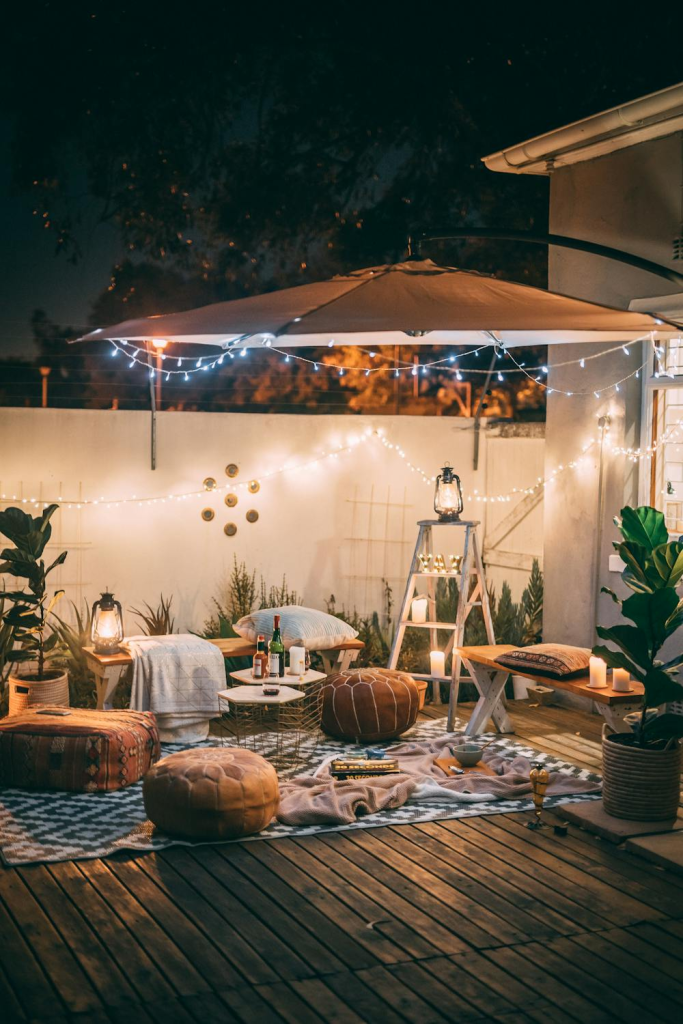Planning an outdoor living space can transform your home’s exterior into a functional and inviting retreat. However, many homeowners make mistakes that affect the space’s functionality and aesthetics. From improper site preparation to selecting the wrong materials, these errors can lead to costly repairs and reduced enjoyment of your outdoor area.

To ensure your space meets your needs and lasts for years to come, avoiding these common pitfalls is essential. This article will highlight the top five mistakes to avoid when planning your outdoor living space, helping you create the perfect outdoor oasis.
Find more about the author on my website for insights and expert advice.
1. Skipping Proper Site Preparation And Ignoring Drainage Needs
Site Preparation: The Foundation Of A Successful Outdoor Area
One of the biggest mistakes people make when planning their outdoor living space is overlooking site preparation. Proper site grading is essential to avoid issues like flooding or shifting foundations. If you fail to address these concerns, your beautiful patio becomes a disaster after the first heavy rain.
Importance Of Drainage Solutions
It’s crucial to plan for drainage. Without an effective drainage system, water can pool around your outdoor features, leading to damage over time. This not only affects the aesthetics of your space but can also result in costly repairs. Ensure the area is correctly graded to direct water away from structures like patios, decks, and garden beds.
Pro Tip: Before starting your project, hire a professional landscape designer or contractor to assess your site and recommend the appropriate drainage solutions.
2. Not Thinking Long-Term About Materials
The Right Materials For Longevity
Outdoor spaces are exposed to the elements year-round, so choosing durable materials is essential. While certain materials may look great initially, they can deteriorate quickly without proper care. For instance, wood decks can be visually appealing but require regular sealing and maintenance to withstand rain, sun, and wind.
Maintenance Considerations
Before selecting materials, consider the maintenance requirements. Some materials, like certain woods, metals, and fabrics, require frequent upkeep to maintain their appearance. On the other hand, materials such as concrete, stone, or composite decking are generally more durable and require less maintenance, saving you time and money in the long run.
Pro Tip: Invest in higher-quality, long-lasting materials that suit your climate and stand the test of time, even with minimal upkeep.
3. Overlooking Weather And Seasonal Needs
Understanding the Impact of the Seasons
When designing your outdoor space, planning for all seasons is essential. While summer might be the main time you envision using your space, winter and other harsh weather conditions can affect it. Without proper weather-resistant furniture, durable flooring, and adequate drainage, outdoor space could become unusable or damaged during the off-season.
Making The Space Functional Year-Round
Investing in weather-resistant furniture, installing proper covers, and ensuring good drainage will help you maintain the space throughout the year. In areas with cold winters, be sure to have measures in place to protect plants, furniture, and other outdoor features from snow and ice.
Pro Tip: Consider adding a fireplace or an outdoor heating system to make the space more comfortable during colder months, allowing you to enjoy your outdoor retreat year-round.
4. Failing To Connect The Indoors With The Outdoors
Creating A Seamless Flow Between Inside And Outside
One of the most common mistakes in outdoor design is not establishing a connection between the indoor and outdoor areas. A well-designed outdoor space should flow seamlessly from your home. This can be achieved by incorporating similar design elements, such as matching materials, colours, or furniture styles.
Achieving Visual Continuity
Ensure that the transition between the indoor and outdoor spaces feels natural. A cohesive design that ties both areas together will create a sense of unity, making the outdoor space feel like an extension of your home rather than a separate entity.
Pro Tip: Use sliding doors or large windows open to the outdoor area. This allows easy access and maintains visual continuity between indoor and outdoor spaces.
5. Forgetting The Magic Of Lighting
The Role Of Lighting In Outdoor Design
Lighting is a critical element in outdoor design. It enhances the beauty of your space and adds functionality. Your outdoor area could look dull and uninviting without the right lighting, especially at night. Ambient lighting can create a cosy atmosphere, while task lighting is necessary for functionality, such as cooking or reading outdoors.
Layering Lighting For Impact
Use a mix of lighting layers to maximise the impact of your outdoor lighting. Ambient lighting provides general illumination, while task lighting focuses on specific activities. Accent lighting highlights key features of your outdoor space, such as plants or sculptures. This combination creates a balanced and inviting atmosphere.
Pro Tip: Use dimmable lighting to adjust the mood depending on the occasion, whether you’re hosting a party or enjoying a quiet evening outdoors.
Conclusion
Planning your outdoor living space requires careful consideration of various factors, from site preparation to choosing the right materials and lighting. By avoiding these common mistakes, you can ensure that your outdoor space is functional, beautiful, and enduring for years.
Remember the long-term maintenance needs, seasonal considerations, and the importance of connecting the indoors with the outdoors. Proper planning can make your outdoor retreat a seamless extension of your home.
Frequently Asked Questions
What Are The Most Important Factors To Consider When Planning An Outdoor Living Space?
When planning an outdoor living space, the key factors to consider include site preparation, drainage, and the selection of durable materials. Considering how the space will function year-round is essential to ensure it’s equipped to handle various weather conditions. Additionally, creating a seamless connection between your indoor and outdoor areas helps maximise the space’s usability and aesthetic appeal.
How Can I Make My Outdoor Living Space More Weather-Resistant?
Choose durable materials like composite decking, stone, or weather-resistant fabrics to make your outdoor space more weather-resistant. Install proper drainage systems to prevent water accumulation, and consider adding covers for furniture or built-in protection for plants during harsh weather. Including outdoor heating solutions can also extend the use of your space during colder months.
What Are Some Lighting Ideas For An Outdoor Living Area?
For an outdoor living space, use a combination of ambient, task, and accent lighting. Ambient lighting creates overall illumination, task lighting is excellent for specific functions like cooking or reading, and accent lighting highlights key features of the space. To enhance the mood, choose dimmable lighting options that can be adjusted based on the time of day or type of event.
